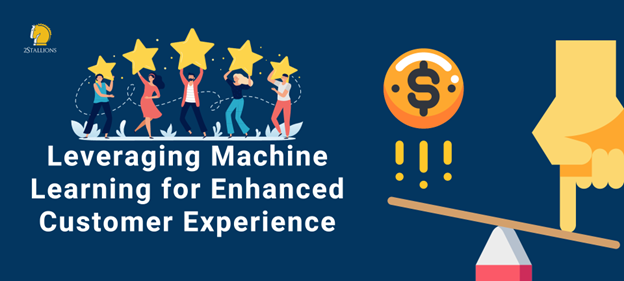Content
SHARE

In the contemporary digital era, businesses are continually seeking innovative ways to improve customer experience. One such method that has gained significant traction is the use of Machine Learning (ML). This article delves into the intricate world of ML and its impact on customer experience.
Understanding Machine Learning
Machine Learning, a subset of Artificial Intelligence (AI), involves the use of algorithms and statistical models to enable computers to perform tasks without explicit programming. It essentially allows machines to learn from data, identify patterns, and make decisions with minimal human intervention. ML has found applications in various sectors, from healthcare to finance, and now, customer experience. It is transforming the way businesses interact with their customers, leading to more personalised and efficient services.
The Role of Machine Learning in Customer Experience
Machine Learning plays a pivotal role in enhancing customer experience. It does this by collecting and analysing vast amounts of data to gain insights into customer behaviour and preferences. This information is then used to personalise customer interactions and anticipate their needs. Furthermore, ML algorithms can predict future customer behaviour based on past interactions. This predictive analysis helps businesses to proactively address customer needs, leading to improved customer satisfaction and loyalty.
Personalisation
Personalisation is a key aspect of customer experience. Customers today expect businesses to understand their needs and provide personalised services. Machine Learning makes this possible by analysing customer data and tailoring services to meet individual preferences. For instance, ML algorithms can analyse browsing history, purchase history, and other data to recommend products or services that a customer is likely to be interested in. This level of personalisation enhances the customer experience and increases customer engagement.
Predictive Analysis
Predictive analysis is another area where Machine Learning shines. By analysing past customer behaviour, ML algorithms can predict future actions. This enables businesses to anticipate customer needs and provide proactive solutions. For example, if a customer frequently purchases a particular product, ML can predict when they are likely to need a refill and send a timely reminder. This not only improves the customer experience but also increases customer retention.
Implementing Machine Learning for Customer Experience
Implementing Machine Learning to enhance customer experience involves several steps. These include data collection, data analysis, model development, and continuous learning. Data collection involves gathering customer data from various sources such as social media, customer feedback, and transaction history. This data is then analysed to identify patterns and trends.
Data Collection
Data collection is the first step in implementing Machine Learning. Businesses need to collect vast amounts of customer data from various sources. This data can include demographic information, purchase history, browsing history, and customer feedback. Once the data is collected, it needs to be cleaned and prepared for analysis. This involves removing any irrelevant or erroneous data and ensuring that the data is in a format that can be easily analysed.
Data Analysis
Data analysis involves using Machine Learning algorithms to analyse the collected data. The goal is to identify patterns and trends that can provide insights into customer behaviour and preferences. These insights can then be used to personalise customer interactions and anticipate customer needs. For example, if the analysis reveals that a customer frequently purchases a particular product, the business can send a timely reminder when it’s time for a refill.
Model Development
Once the data has been analysed, a Machine Learning model needs to be developed. This model will use the insights gained from the data analysis to make predictions and decisions. The model needs to be trained using a portion of the collected data. Once trained, the model can be tested using the remaining data to ensure its accuracy.
Continuous Learning
One of the key features of Machine Learning is its ability to learn continuously. As more data is collected and analysed, the ML model can improve its predictions and decisions. This continuous learning allows the model to adapt to changing customer behaviour and preferences, ensuring that the customer experience remains top-notch.
Conclusion
Machine Learning offers immense potential for enhancing customer experience. By leveraging ML, businesses can provide personalised services, anticipate customer needs, and improve customer satisfaction and loyalty.
However, implementing ML for customer experience requires a strategic approach. Businesses need to collect and analyse vast amounts of data, develop and train ML models, and ensure continuous learning to keep up with changing customer behaviour and preferences.
Frequently Asked Questions About Machine Learning
What Exactly Is Machine Learning?
Machine learning is a branch of artificial intelligence (AI) and computer science which focuses on the use of data and algorithms to imitate the way that humans learn, gradually improving its accuracy.
What Is The Difference Between Ai And Ml?
AI includes everything from smart assistants like Alexa to robotic vacuum cleaners and self-driving cars. Machine learning (ML) is one among many other branches of AI. ML is the science of developing algorithms and statistical models that computer systems use to perform complex tasks without explicit instructions.
What Are The Big 3 Of Machine Learning?
- Supervised learning
- Unsupervised learning
- Reinforcement learning
Why Do We Need Machine Learning?
Machine learning is an important tool for data analysis and visualisation. It allows you to extract insights and patterns from large datasets, which can be used to understand complex systems and make informed decisions.
How Does Machine Learning Improve Customer Experience?
When they process customer experience data they can dig into audience demographics, interests, trending topics and other factors to provide increasingly accurate insights over time. An example of this is how Spotify uses machine learning to improve content recommendations.














